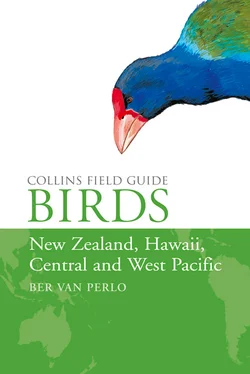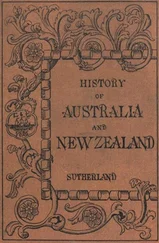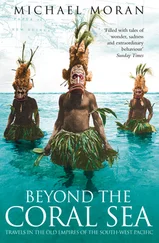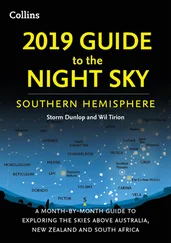TECTONICS The outer mantle of the earth is formed by solid rock (the lithosphere), covered by an accumulation of sediments, volcanic products and changed basic rock (the crust). The lithosphere overlays the asthenosphere, a mantle of plastic flowing rock.
The lithosphere is horizontally subdivided into seven or eight major plates and many minor plates, which ride on the asthenosphere. Some of these plates and parts of them are denser and heavier, lay lower and form the floor of the oceans. The plates move in relation to each other:
• at spreading (divergent) boundaries (A1);
• at collision (convergent) boundaries (A2); and
• at transform boundaries (A6), where two plates move in opposite directions.
The area covered by this book is dominated by a convergent border between the oceanic Pacific Plate and the continental Australian and Filipino Plates (see map ‘PLATE TECTONICS’).
Tectonic plates separate (or diverge) from each other along a 80,000km long, mainly mid-ocean network (A1) that encompasses the earth. Nearest to the area is a network segment along the west coasts of North and South America. A typical spreading (or divergent) zone (C) can be described as a pair of parallel ridges on both sides of a rift. The rift bottom fills itself with upwelling, red-hot magma, which drives the plates apart and forms new ocean floor.
Collision boundaries are zones of subduction, where heavier oceanic plates dive under lighter continental plates as shown in A2 and D. These zones are marked by a deep trench (D3). When the crust, together with lithospheric material, sinks into the asthenosphere it is heated to such a high temperature that magma chambers (D4) are formed, which float to the surface forming rows of volcanoes (D5) arranged in island arcs (the Kermadecs and Northern Marianas are typical island arcs). These arcs form a sort of perforation, along which the edge of the overlaying plate is often torn off and dragged under itself on the back of the submerging plate.
Other types of conflicting boundaries are also possible (A6), for example, where plates or plate fragments rub along each other under a sharp corner.
The speed of spreading is unevenly dispersed along the mid-ocean ridge system. Tensions are solved by many fissures (A7) perpendicular to the rift. The rift segments (B8) shift in relation to each other; the parts of fissures between rift segments are called transform faults. The movement at their sides is in opposite directions, which may cause volcanic activity. The outer parts of the fissures are called fracture zones; these separate areas moving in the same direction, which causes no or only low volcanic activity.
Here and there, far from the edges, magma penetrates through the ocean plate. These places are known as hotspots (E); hot magma wells up via these holes giving birth to volcanic islands at the surface. Because the ocean plate moves in a north-westerly direction the hot spots keep drilling holes, forming chains of islands, the youngest being the most eastern one. The Hawaiian islands are a good example.
The map ‘PLATE TECTONICS’ also shows a transform fault (green line on map), running from the Nazca Plate (near South America) via the Pitcairns to the Line Islands, which could have produced the many islands of the Pitcairn, Tuamotu and Line Islands. However, their origin could also have been a hot spot near Easter Island.
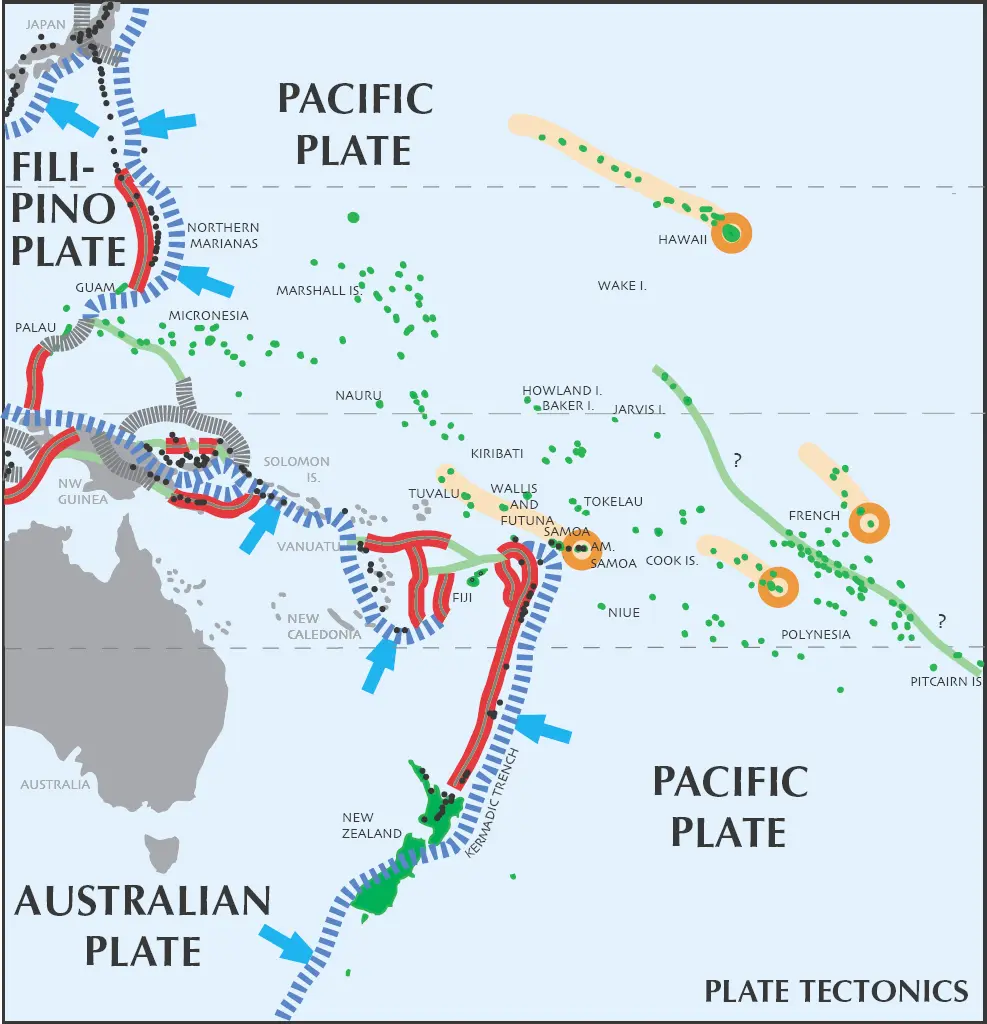
REEF BUILDING There are many species of coral organisms. The group that can build a reef is only found:
• in clear salt waters;
• at depths shallower than 50m (beneath this depths the coral skeletons change to coral limestone, darker yellow-green in figures);
• with an optimum temperature of 26–27°C; and
• strong currents and/or heavy agitation (otherwise food particles are unable to reach the tentacles of the polyps).

Most if not all tropical Pacific islands have a volcanic origin. Reef building starts as soon as a new volcano has emerged (A) and coral larvae have been carried in by ocean currents.
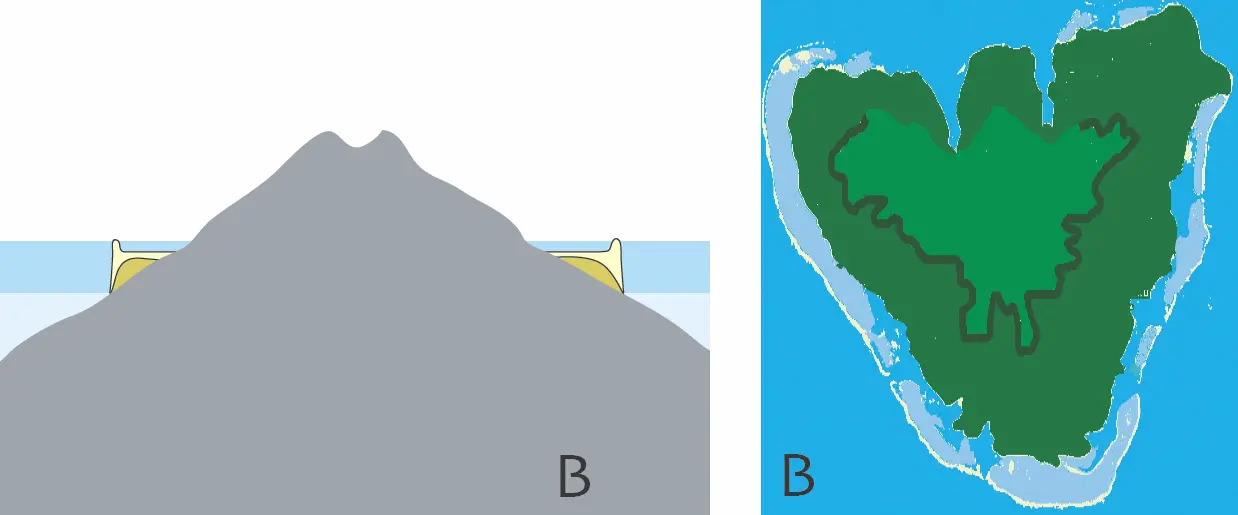
The first stage is a fringing reef (B) at a short distance from land and normally en-compassing a shallow lagoon. It takes about 10,000 years from stage A to reach stage B.
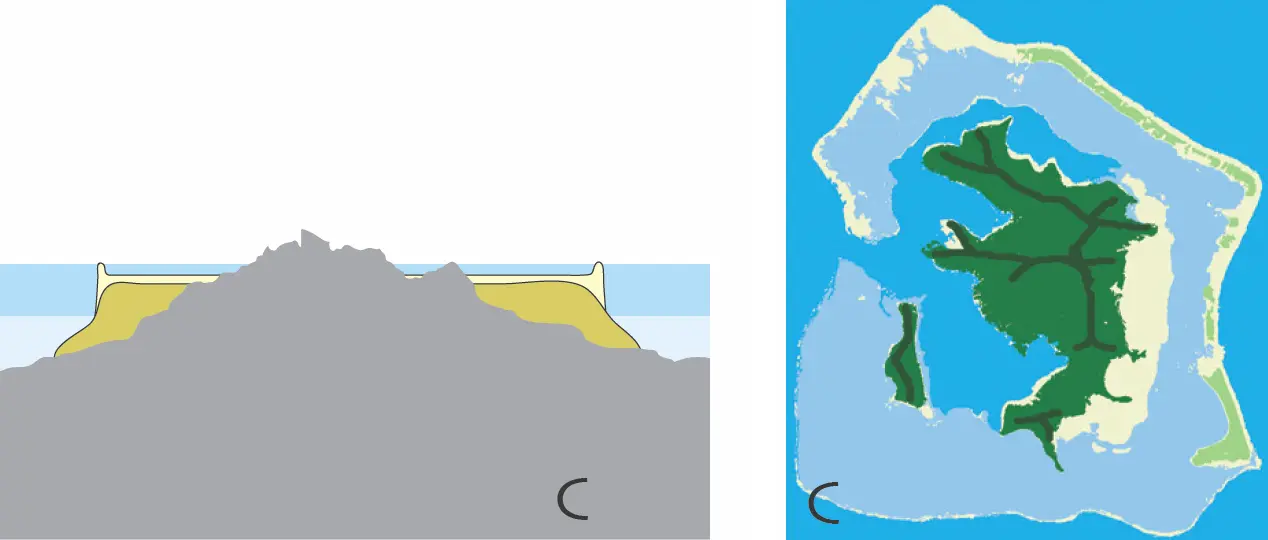
In the course of time the volcano erodes or the local ocean bottom subsides. If coral growth can keep up with the speed of this process, a barrier reef (C) is formed on the base of coral limestone; note the wider, locally deeper lagoon.

Ultimately, all land will be eroded, and the barrier reef will become an atoll (D) en-closing an open lagoon. The process from A to D can take 30 million years.
It is possible that an atoll can be uplifted by movements in the earth’s crust, by which an uplifted coral island is formed. A limestone rock emerges (E) and becomes encircled by a fringing reef.
LAND USE AND VEGETATION TYPES Once most islands were mainly covered by forest. The arrival of man brought about many changes in this environment and the following are the main present-day habitats.
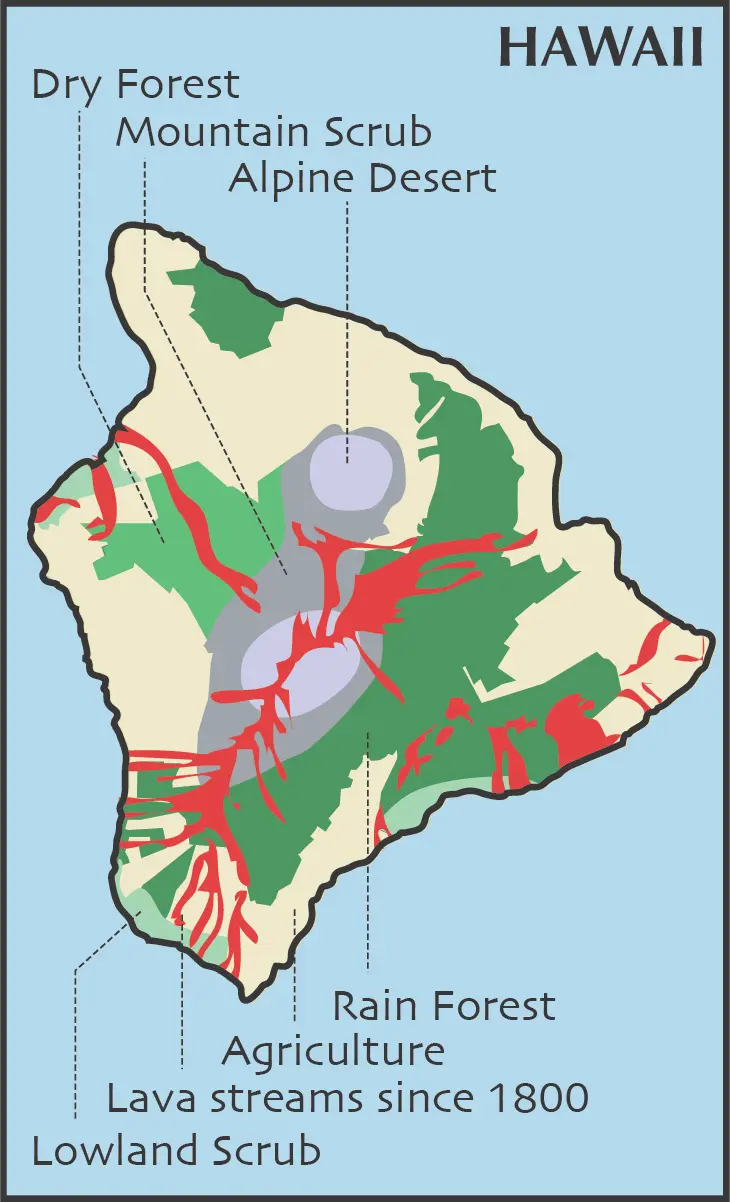
Ocean
Open Tropical Ocean: warm water contains less prey (fish, squid, etc.) than cold water, therefore most seabirds in the tropical ocean are more numerous at places where deep cold currents from higher latitudes well up above (under) sea mounts (submerged volcanoes) and at the western edges of the Pacific.
Temperate Ocean: water temperatures between 10 and 18°C, found between the tropics and 48°S and N. Rich in oxygen and nutrients, very rich in fish (less species than in tropical seas, but often in large shoals) and in other life forms.
Coastal habitats
Lagoon: shallow, clear water rich in food for terns, gulls, noddies, tropicbirds and frigatebirds.
Seashore: especially important for migrating shorebirds.
Mangrove: mangrove stands support many bird species and form a habitat where heronries are often found.
Littoral Forest: the forests and thickets bordering the beach.
Lowland forest types
Lowland Dry Forest: found at the dry north-western side of high mountain chains, where the rain, brought in by the eastern trade winds, is released on the eastern slopes. All forms of dry forest are almost completely transformed to agricultural use. In the mixed exotic/native remains a few of the original endemic bird species may be found, plus many alien species.
Lowland Rainforest: as highland rainforest but with a more diverse range of tree species, denser undergrowth and many tree ferns.
Agricultural habitats
Coconut/Breadfruit Forest: found in the coastal areas of many Pacific islands. Mixed with species such as guavas, mango and Ficus. This is an ancient man-made habitat.
Читать дальше
